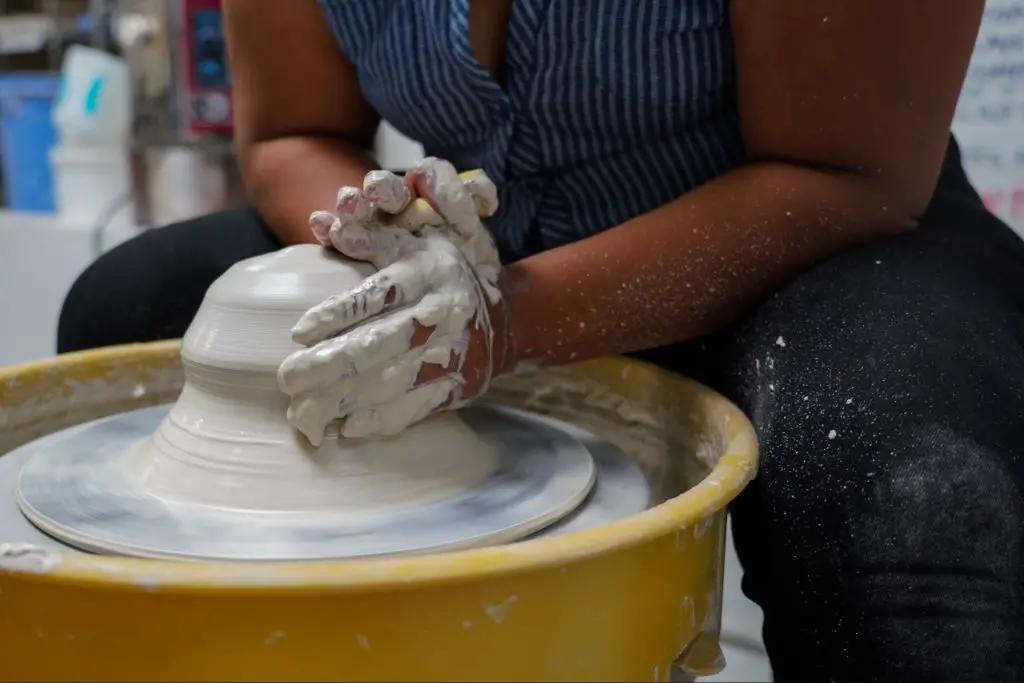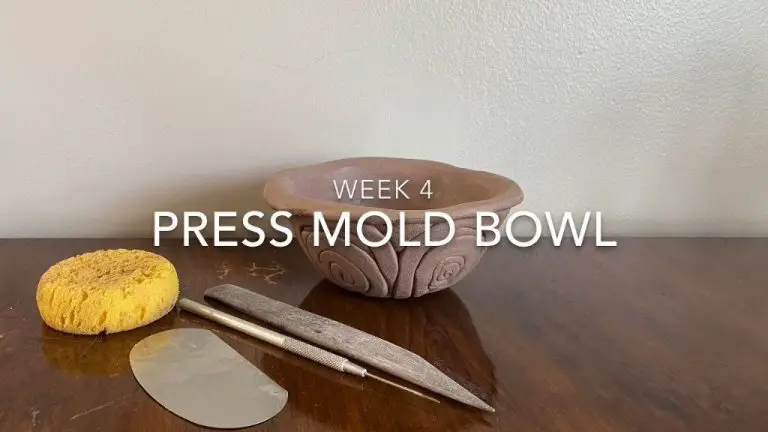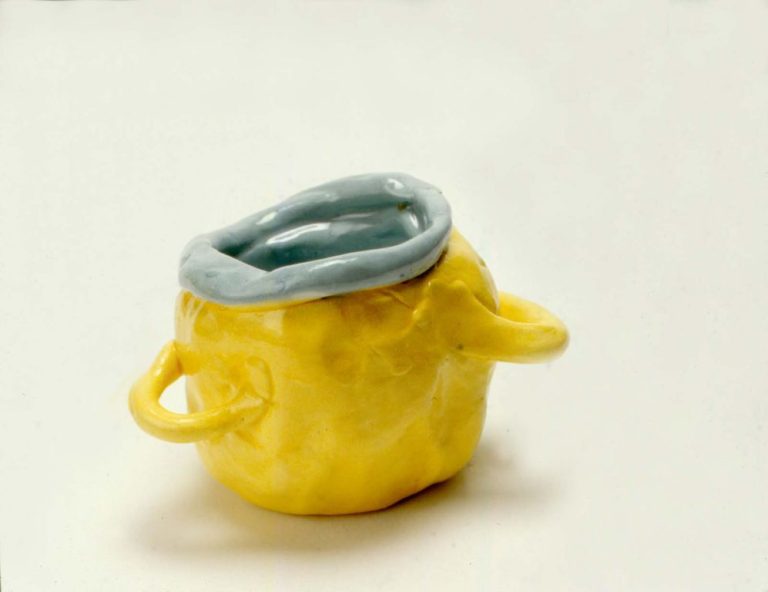Experimenting With Alternative Firing Techniques In Clay Pottery
Clay pottery dates back over 20,000 years to some of the earliest human civilizations. The discovery of firing techniques allowed clay vessels to be transformed into functional and durable pottery. Traditional firing methods involved exposing clay pieces to sustained heat from an open fire, primitive kiln, or pit fire. This hardens and strengthens the clay through a process called sintering, creating permanently finished ceramic ware. While ancient firing techniques are still practiced today, many alternative methods have also emerged to achieve unique artistic effects.
This article provides an overview of traditional and alternative firing techniques used in clay pottery. It will cover the history, processes, and results of different firing methods. We will also discuss tips for artists interested in experimenting with alternative firings. Understanding the range of options for finishing clay work allows potters to discover new creative possibilities.
Traditional Firing Methods
For centuries, potters have relied on kiln firing as the standard technique for hardening and finishing clay wares. Kiln firing involves placing clay pieces in a large oven-like chamber called a kiln, bringing the temperature up to over 1000°C, then allowing time for the clay to fully mature before slowly cooling back down.
Firing in a kiln has several benefits:
- Consistent results – Kilns allow for precise control over temperature and atmosphere during the firing process.
- Durability – Kiln firing fully vitrifies the clay, making pieces less porous and suitable for functional use.
- Wide availability – Electric and gas kilns are manufactured commercially and readily available to purchase.
However, kiln firing also has some downsides:
- High equipment cost – Electric kilns in particular require a significant upfront investment.
- High energy use – Firing kilns requires a lot of energy over an extended period of time.
- Uniform results – The controlled kiln environment can limit the potter’s creative expression.
Alternative Firing Techniques
There are several alternative firing techniques that potters can experiment with to achieve unique results compared to traditional kiln firing. Three of the most popular alternative techniques are raku firing, pit firing, and saggar firing.
Raku firing involves removing pottery from the kiln while it is still glowing hot and placing it into containers with combustible materials like sawdust or leaves. This produces areas of dramatic black carbon trapping on the pottery surfaces. Raku firings happen quickly, making it possible to complete a firing in one day.
Pit firing involves digging a pit and building a fire in it. Pottery is placed around the fire and covered with vegetation, sawdust, dung or other organic materials. The fire is maintained for hours or days before being quenched with water. This firing technique results in colorful flashes on the pottery surfaces.
Saggar firing involves placing pottery inside a saggar – a ceramic box or tin can – before firing. Combustible materials can be layered inside the saggar container to produce effects from smoke and gases. Saggars protect pottery from direct flame and add mystery about final results.
While traditional kiln firing provides control and consistency, alternative firings add spontaneity and serendipitous effects. The results can be unpredictable but full of happy accidents.
Source: https://simpleblog.ai/blog-ideas/Pottery-making-options
Raku Firing
Raku firing originated in Japan in the 16th century and is a fast low-temperature firing process that creates colorful results with metallic looking finishes. The raku technique involves removing pottery from the kiln at around 1600-1800°F while it is still glowing hot and placing it into containers with combustible materials like sawdust or paper which creates the signature raku finishes (Source).
The raku firing process starts by bisque firing pottery to about 1800°F. The bisque ware is then glazed with special raku glazes and placed in a raku kiln to be fired quickly up to about 1600-1800°F. Right before peak temperature, the ware is removed from the kiln using long metal tongs and is placed into a container filled with sawdust or paper. The combustible materials ignite from the heat of the glowing hot pottery, which creates effects like crackling and metallic luster finishes. After smoking stops, the pottery is quenched in water to stop the firing process (Source).
Raku firing is known for producing dramatic surfaces like crackled glazes, metallic finishes, and unique colors from the post-firing reduction process. It allows potters to achieve colorful iridescent and matte surfaces that can’t be created with regular glaze firings.
Pit Firing
Pit firing is an ancient technique that involves burying pots in a pit filled with combustible materials and firing up the pit to produce unique effects on the clay. This low-tech approach utilizes the earth as a kiln and takes advantage of burning materials like sawdust, leaves, paper, and straw to generate the required heat and smoke for firing.
To pit fire pottery, first a hole approximately 2-3 feet deep is dug in the ground. Pots are then placed inside the pit, often stacked on top of each other. Next, flammable materials like twigs, dried leaves, pine needles, and sawdust are added in layers over and around the ware. The pit is then lit from the top and burns down through the combustible materials, with temperatures reaching around 1000-1600°F.
As the materials burn, smoke penetrates the clay pieces. Flames cause ash deposits and fire clouds on the surface. Reduction firing in low oxygen creates darker colors with mottled effects. When the pit cools, pottery is left with earthy colors, crackling, spotting, and carbon trapping. The results are highly unpredictable and make each pit fired piece truly one-of-a-kind.
Pit firing is popular among ceramic artists looking to achieve a primitive, organic aesthetic. It connects contemporary pieces back to ancient firing traditions. The technique also takes advantage of natural materials, keeping costs low while allowing for limitless experimentation and custom finishes.
Saggar Firing
Saggar firing involves enclosing pots in containers called saggars during the firing process. Saggars protect the enclosed pots from direct flame and allow combustion gases to circulate around them. Saggars are made from high temperature materials like refractory bricks or clay and are reusable. They come in various shapes and sizes to accommodate different types of pottery pieces.
To fire using saggars, first place pottery pieces in saggars and seal them shut. Stack saggars in the kiln, leaving enough space for heat circulation. Fire the kiln to the desired temperature, allowing combustion gases to penetrate the saggars and circulate around the ware inside. Saggars shield pots from direct flame contact and trap gases, which react with the clay surface to produce unique colors and textures.
Compared to naked raku firing, using saggars results in more subdued effects with muted colors and less crackling. The surface finishes are satiny and lustrous rather than metallic sheens from raku. Pieces fired in saggars have an abstract, earthy look reminiscent of archaeological artifacts.
Saggar firing requires testing to find the ideal setup for achieving the artistic effects you want. Try firing different clays in varied saggar environments and maximize gas circulation and exposure time inside saggars during firing. With practice, you can create distinctive surfaces and patinas on your pottery.
Smoke Firing
Smoke firing is an ancient technique that involves exposing pottery to smoldering sawdust smoke for hours or days. The smoke penetrates the porous clay, turning the pottery black and adding unique effects. Traditionally, smoke firing involved digging a pit, building a fire with hardwood, and then adding sawdust once the flames died down. The fire is kept smoldering by regularly adding small amounts of sawdust. The pottery pieces are placed on grates above the pit and covered with corrugated metal, straw mats, or canvas to contain the smoke.
Pots fired with the smoke technique get covered with carbon black from the smoke, resulting in a rich black or gray coloration. Effects vary depending on the length of exposure, type of wood used, placement of pieces, and whether saggars are used. The carbon can produce crackled textures, banding, rubs, and other organic patterns. Smoke firing brings out the natural textures and colors of the clay body. Many potters enhance the results by applying slips, terra sigillatas, wax resist, or other surface decorations prior to firing. With lengthy exposure, the carbon can permeate surprisingly deep into the clay.
The fuel source affects the final results. Hardwoods like oak, hickory, or fruit woods produce more tar and richer blacks than softwoods. Burning leaves, grasses, and plant materials creates different effects. The smoke’s intensity and duration impact the depth of penetration into the clay. Mastering smoke firing involves careful control of air supply and fuel to sustain ideal smoking conditions.
Sources:
http://www.craftpotters.com/cpa-members-profiles-p/
Horse Hair Firing

Horse hair firing is a technique that introduces horse hair during the firing process to create unique patterns and textures on the ceramic surface. According to The Spruce Crafts, the general steps are:
- Form the ceramic piece and then burnish it to create a smooth surface.
- Fire the piece in a raku kiln to between 1300°F – 1800°F.
- Once the ideal temperature is reached, quickly remove the piece from the kiln using tongs. Carefully lay horse hair onto the extremely hot surface.
- The horse hair will burn and leave carbon trails and imprints from curling and shrinking as it reacts to the heat.
- Allow the piece to cool slowly.
As noted on Ceramics Made Easy, horse hair firing is similar to raku firing. The horse hair introduces random organic patterns as it burns. Timing is critical to achieve the desired effect. Experimenting with the amount of hair and fuel can create unique results.
Comparing Results
The various alternative firing techniques each produce unique effects on the final pottery pieces. Raku firing, for example, often results in crackled surfaces and metallic lustres due to the rapid cooling process involved (https://thepotterywheel.com/firing-clay/). Pit firing produces natural effects like spotting and flashing from exposure to smoke and flame in the open pit environment (https://ancientpottery.how/open-fire-pottery/). In contrast, saggar firing involves enclosing wares in a protective container so they interact with minimal smoke and flame, resulting in more muted surfaces. Across all these techniques, the lack of control versus a kiln leads to more dramatic, one-of-a-kind results. Experimenting with the different methods allows potters to explore a wider range of visual expressions in their finished pieces.
Tips for Experimenting
Clay pottery requires a variety of alternative firing techniques you can experiment with in your own studio or backyard. When trying new firing methods, keep these tips in mind for optimal safety and results:
Safety First
Some alternative firing techniques like pit firing or raku firing involve open flames and fire. Be sure you are working in a safe, open area clear of flammable materials. Have a water source or fire extinguisher on hand. Wear protective gear like fireproof gloves, aprons, and eye protection.
Many firings also produce smoke or fumes, so make sure you work in a well-ventilated area. Avoid breathing in smoke and wash your hands after handling materials.
Recommended Materials
Choose the right clay body, glazes, and materials suited for your desired firing method. For instance, raku glazes are specially formulated for fast heating and cooling cycles. Using the wrong clay or glaze can lead to cracking or exploding pottery.
It’s ideal to use a kiln shelf, bricks, or other heat-resistant surface to elevate and support pieces. Sand, sawdust, leaves, and other combustible organic materials work well for pit and smoke firings. Have materials like steel wool on hand for interesting color effects.
Start with simple, small pieces first while testing new techniques. Take detailed notes on firing times, temperatures, and results to refine your methods.


